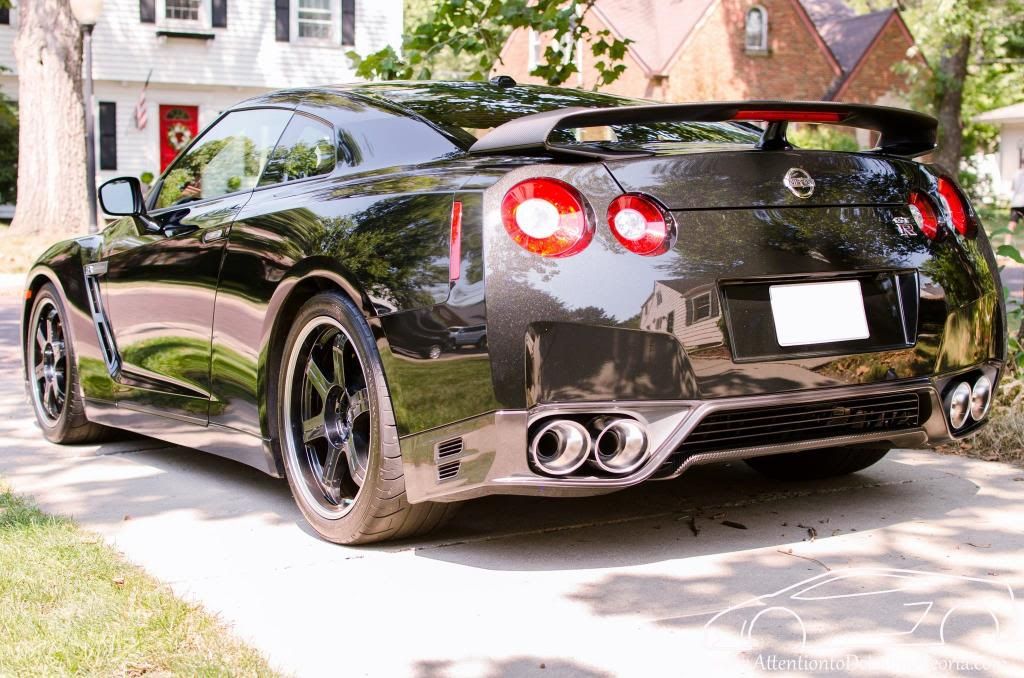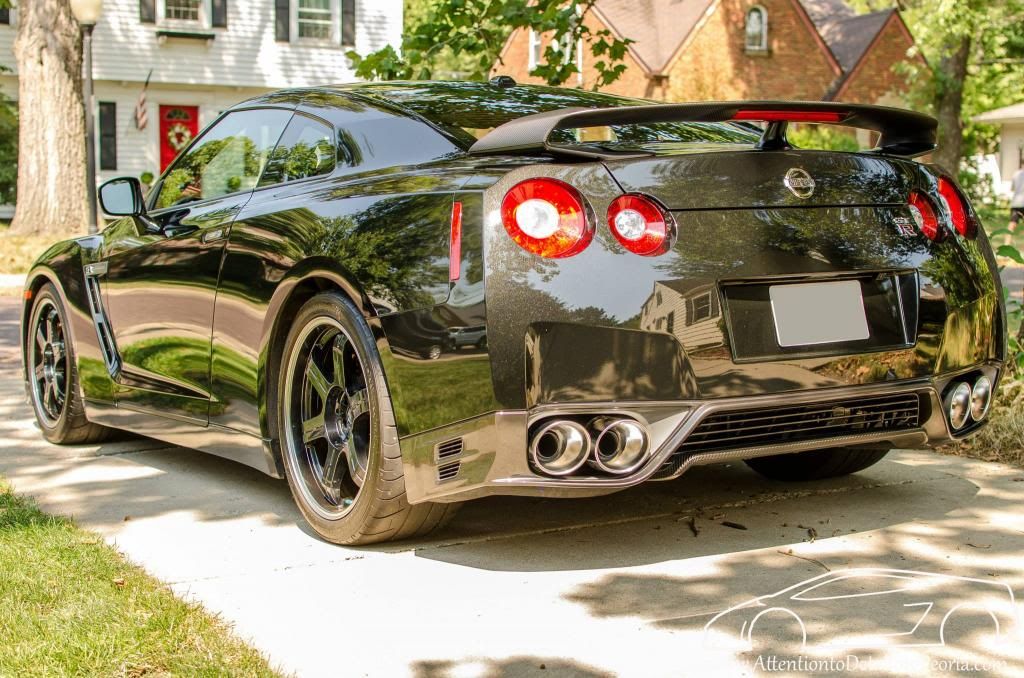 Thanks: 0
 Likes: 0
 Dislikes: 0
-
Super Member

Photography Basics Part 4: File Formats & Post-Processing
Photography Basics Part 4: RAW vs. JPEG
There are two basic file types that most advanced point and shoot and DSLR cameras can capture - RAW and JPEG. This article will cover the very basics of how each file type works. I personally shoot in raw 99.9% of the time.
The biggest advantage to RAW files is that they store more data in each file... bear with me as I walk you through it.
When you take a photo with your camera and your camera stores it as a JPEG, there is a lot of stuff that your camera is doing to the file “behind the scenes” before it is stored. When you press the shutter button, data is captured by the digital sensor. This data is then processed by your camera based on a number of settings that you can set in your user menus (or are predefined in the camera software). These settings control things like sharpening, contrast, color tone, white balance, etc. All of these changes are applied to the image by your camera, the data is then compressed, and stored as the JPEG format file. Note: All JPEG images are processed identically unless you change a setting on your camera.
When you shoot in RAW, your camera captures the data and does nothing with it. No additional processing is done within the camera "behind the scenes" like it does with JPEG files. These files are very large compared to compressed JPEGs because they contain much more raw data. For this reason, every photo must then be post-processed and then converted to JPEG.
So why shoot in RAW? Seems like a lot of work?
I’m sure you have been in a situation where you're photographing a black car on a very bright day and according to your camera, the optimum exposure is set so that the car looks WAY too dark (assuming you are not using spot metering)… this is to adjust for the bright background. This is an example of extreme dynamic range where the environment is bright but your subject is dark, so that is too much for your camera to handle. RAW files capture that data, and you can then bring out the details that appeared to be lost in the shadows to make it truly appear as what you saw in real life (Pro Tip: Expose your images so that highlights are not clipped. It is much easier to bring back detail from the shadows. If highlights are blown out, the detail may be completely lost.) The human eye can process a MUCH larger dynamic range than a camera sensor, so RAW files help to make images more realistic by allowing you to tweak the image to display a closer representation to what you saw when you were standing next to the perfectly polished vehicle.... that is just a detailing related example. RAW files are also great for landscapes and portraits for similar reasons. They also allow you to very accurately adjust your white balance to make the colors truer to the real life representation (proper white balance makes a HUGE difference!). I'm sure you've taken a photo and seen that it had a blueish or yellowish color to it? That is your camera's white balance setting that is essentially guessing on how the colors should appear.
Processing Software
I use Adobe Lightroom 4 to import my RAW files from my camera's memory card, I then sort through my photos to determine which ones I want to keep, I then apply general sharpening to all photos (a preset I have created), and if needed, I make adjustments to each photo with the ultimate goal of producing the most realistic representation of what I saw in person. All in all, I maybe spend 15-45 minutes processing ~100 detailing photos... it is a relatively quick process and IMO makes a world of difference in accurately displaying your work. When I do "photo shoot" type of after pictures I spend more time on processing to really tailor the look of the photo to make it more "pretty", but for the majority of my detailing shots, they are just ‘advanced snap shots’ for lack of a better term.
Post Processing
Here is an example of a Nissan GT-R I worked on (Full Write Up Here). In this particular case, the lighting was less than ideal. There was sunlight coming through the trees, but part of the car was also in the shade. This uneven lighting is another example of high dynamic range that your camera simply cannot handle on its own. This first file is the RAW image that was converted straight to JPEG without any modifications. Key areas to notice – Blown out highlights (over exposed areas): Driveway, tail light, exhaust tips, tree & house in background. White Balance: Too cool (at least for my taste) Shadows: Lacking some detail in wheels

After applying some quick tweaks, I was able to reduce the highlights (overexposed areas) by simply dragging the ‘highlight bar’ in lightroom, bring out a bit of detail in the shadows using the ‘shadows bar’ in lightroom, warm up the white balance using the white balance bar, add some sharpening (not really noticeable when viewed at this size), and I typically add a bit of contrast. This process takes maybe 1-2 minutes (depending on how picky you are). If you have many images that were taken in the same scene, they can then be batch processed with the same adjustments you made to the first image. This saves a great deal of time.

This was done many months ago so I cannot remember the exact details, but you can see the images are not drastically different. The differences, however, do make the image much more appealing and are a truer representation of what was visible in person.
Post Processing vs "Photoshopping"
Many people who are unfamiliar with these processes consider post-processing to be “photoshopping” or “editing”. This gives a negative association for many of us photo enthusiasts whose photos may stand out because they appear ‘different’. I will again reiterate that for detailing purposes, the idea of post-processing should be to provide an accurate representation of what was seen in person.
Here is another example that will help to explain the difference between post-processing and “editing” or “photoshopping”. This Audi S4 belongs to a friend of mine. He wanted some photos taken right after he bought it, so of course I was happy to help. YES – there are swirls everywhere! It was detailed later that year… click here to view the thread to see it after polishing.
This first image shows the RAW file straight out of the camera. The image is not too bad, but you will notice the white balance is off (too cool - set to ‘auto’ on the camera) and the photo is underexposed (oops  ). ).

Simply tweaking the exposure a bit, adding some contrast, and warming up the white balance, the photo looks TONS better! Again, these minor adjustments take no time at all but make a huge difference in the overall quality of the photo. These are necessary processing steps to produce a realistic photo.

This is an example of what “photoshopping” or “editing” entails. This image was heavily edited to remove the nasty glare from one of my flashes, remove unwanted reflections on the front of the vehicle, darken the foreground, etc. This process takes a great deal of time compared to basic post-processing tweaks. I believe this “simple” photoshop took me about 1.5 hours (I am not an expert!).

For more information, check out these articles:
File Formats
White Balance
Hopefully this has helped shed some light on the pros/cons of shooting in RAW & Post-Processing vs. “Photoshopping”. I will put together a more detailed write up on my post-processing workflow sometime in the future.
Thanks for reading. Please let me know if you've got any other questions 
*excuse any typos / bad grammer... I put this together rather quickly*
-Zach McGovern
 Retired Professional Detailer
Retired Professional Detailer
-
Re: Photography Basics Part 4: File Formats & Post-Processing
Thanks for another awesome photography article Zach!

-
Super Member

Thanks for the article how do you change the camera setting to raw?
-
Super Member

Re: Photography Basics Part 4: File Formats & Post-Processing
Good information! Thanks for the article. 
-
Super Member

Re: Photography Basics Part 4: File Formats & Post-Processing
 Originally Posted by Mike.Phillips@Autogeek

Thanks for another awesome photography article Zach!

Thanks for reading, Mike!
 Originally Posted by BrianMcLeod

Thanks for the article how do you change the camera setting to raw?
^It depends on your camera... what camera are you using? Are you sure it can shoot raw to begin with? Easiest way to find out is to consult your manual or "google it".
 Originally Posted by FrankS

Good information! Thanks for the article. 
^You're welcome
 Retired Professional Detailer
Retired Professional Detailer
-
Regular Member

Re: Photography Basics Part 4: File Formats & Post-Processing
 love your posts...hopefully one day i can purchase a DSLR and put your info to use love your posts...hopefully one day i can purchase a DSLR and put your info to use 
-
Re: Photography Basics Part 4: File Formats & Post-Processing
Another top notch photography article Zach!
Thanks for putting it together!
-
Re: Photography Basics Part 4: File Formats & Post-Processing
-
Super Member

Raw is usually specific to camera manufacturer. For my Nikon, .nef is the file format that gives a raw image for post processing. You should be able to change the setting somewhere in the file size settings. And generally, you need a specific software on the computer to open a raw file, windows photo viewer does not know how to read this type of file.
Sent from my iPad using Tapatalk
-
Super Member

Re: Photography Basics Part 4: File Formats & Post-Processing
Zach is the MAN! Always love reading your threads man! Keep it up
Similar Threads
-
By zmcgovern45 in forum How to Articles
Replies: 60
Last Post: 11-17-2014, 12:58 AM
-
By zmcgovern45 in forum How to Articles
Replies: 30
Last Post: 01-27-2014, 04:22 PM
-
By zmcgovern45 in forum How to Articles
Replies: 25
Last Post: 01-01-2014, 11:05 AM
-
By T3 AutoDetails in forum How to make money detailing cars
Replies: 3
Last Post: 02-20-2013, 06:54 PM
-
By JeffW in forum Customer Comments
Replies: 14
Last Post: 05-08-2012, 07:40 AM
 Members who have read this thread: 0
Members who have read this thread: 0
There are no members to list at the moment.
 Posting Permissions
Posting Permissions
- You may not post new threads
- You may not post replies
- You may not post attachments
- You may not edit your posts
-
Forum Rules
|
| S |
M |
T |
W |
T |
F |
S |
| 31 |
1
|
2
|
3
|
4
|
5
|
6
|
|
7
|
8
|
9
|
10
|
11
|
12
|
13
|
|
14
|
15
|
16
|
17
|
18
|
19
|
20
|
|
21
|
22
|
23
|
24
|
25
|
26
|
27
|
|
28
|
29
|
30
| 1 | 2 | 3 | 4 |
|
).












 Thanks:
Thanks:  Likes:
Likes:  Dislikes:
Dislikes: 







 Reply With Quote
Reply With Quote


Bookmarks